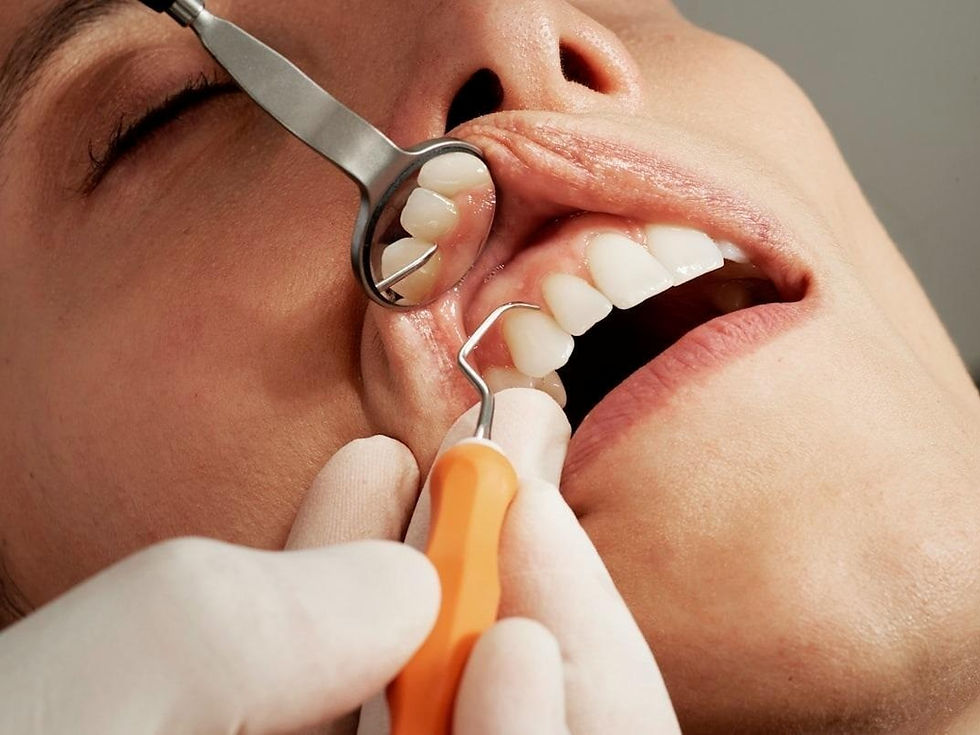A Clinician’s Guide to Selecting the Perfect Dental Composite Shade
- trevor8733
- 4 days ago
- 3 min read

It happens to the best of us:
Standing chairside with a composite restoration half-finished, you’re squinting at your tooth shade guide under different lighting conditions, second-guessing your initial shade selection.
Every clinician has been there. In truth, achieving predictable dental outcomes in dental composite shade matching comes down to knowing the science and following a systematic approach.
After 35 years of supporting dental professionals worldwide, we’ve seen firsthand how proper shade selection can make or break a restoration’s success. And we know that with the right knowledge and quality materials, you can achieve consistently beautiful results that keep your patients smiling and your practice thriving.
Here’s our definitive Dentonics guide to dental composite shade matching.
The Science Behind Shade Perception
Color science forms the foundation of successful shade selection in dentistry.
Natural teeth aren’t simply “white” — they’re complex optical structures that interact with light in sophisticated ways. And when you understand this, you’ll take the first step to transforming your approach to teeth restorations.
The Three Dimensions of Color
Every shade you perceive consists of three critical components. Hue represents the basic color family — whether you’re looking at yellow, orange, or gray undertones in a tooth.
Value describes the lightness or darkness of the shade, often the most critical factor in achieving invisible restorations. Chroma indicates the saturation or intensity of the color — how vivid or muted the shade appears.
How Light Affects Your Decisions
Exposed to lighting, natural teeth exhibit unique optical properties that synthetic materials must replicate.
Translucency allows light to pass through enamel layers, creating depth and vitality. Meanwhile, fluorescence causes teeth to emit a subtle blue-white glow under UV light.
Lastly, there’s opalescence. Think of it as a shade’s ability to create the color-shifting effects you notice as viewing angles change.
Mastering the Step-by-Step Shade Matching Process
Successful dental restoration color matching requires a methodical approach that eliminates guesswork.
Fortunately, we’ve refined this process through decades of working with clinicians who demand predictable results. Here’s our two-step process for effective dental restoration color matching.
Step 1: Pre-Selection Preparation
Pre-selection is where you establish viable color and shade options for your clients. During this phase, perform the following:
Remove all lipstick and heavy makeup from the patient’s perioral area
Clean teeth thoroughly to remove plaque and surface stains that can mislead your assessment
Ensure your operatory has both natural north-facing light and quality LED illumination
Allow your eyes to rest between shade evaluations to prevent color fatigue
Take pre-operative photographs under standardized lighting conditions for reference
Step 2: The Critical First Look
Follow these steps once you’ve passed the pre-selection phase:
Make your initial shade assessment within the first few seconds — your fresh eyes are most accurate
Compare shades at the middle third of the tooth, avoiding the incisal and cervical areas initially
Use a neutral gray background to eliminate color interference from surrounding tissues
Navigating Common Shade Matching Challenges
Even experienced clinicians encounter situations where standard techniques fall short.
These challenges often separate good restorations from exceptional ones.
Complex Polychromatic Cases
Multi-shaded restorations require careful layering of composite resin shades to replicate natural tooth architecture. Start with your base shade in the dentin areas, then build translucent enamel layers incrementally. Consider using intermediate shades to create smooth transitions between different color zones.
Tetracycline and Age-Related Discoloration
Intrinsic staining presents unique challenges that standard shade guides can’t fully address. These cases often require custom shade modifications and strategic opacity management.
Document your layering sequence carefully — successful complex cases become valuable references for future similar situations.
Leveraging Our Quality Materials for Superior Outcomes
Your technique is only as good as your materials allow. Whether it’s one of our MasterDent composites or restorative resins, any material for predictable composite shade matching gives you the following advantages:
Extended working times for proper layering technique
Exceptional polish retention that maintains shade integrity
Consistent handling characteristics and predictable response
Comprehensive shade selection covering natural tooth colors
Superior translucency control for natural depth and vitality
Excellent sculptability that holds fine anatomical details
Minimal polymerization shrinkage preventing marginal gaps
Fluorescence properties matching natural tooth behavior
Our Master-Dent composite materials exemplify these qualities, providing the consistency and performance characteristics that support your artistic vision while delivering the durability your patients expect.
Beyond Technique: Build Your Shade Matching Confidence
Excellence in shade selection isn’t built overnight. Every case teaches you something new about color perception, material behavior, and patient expectations.
As mentioned earlier, however, your skills can only go so far. For the added edge and confidence, you can’t go wrong with quality dental materials like our Master-Dent composites and restoratives.
Let your patients see the care and precision you bring to dental composite shade matching. Explore our line of composites and restoratives, and elevate your clinical artistry and esthetic outcomes.




Comments